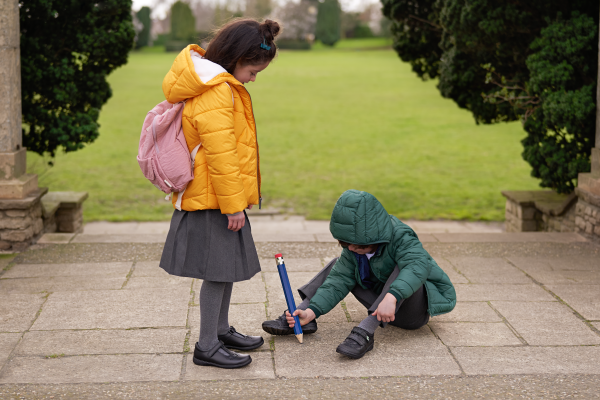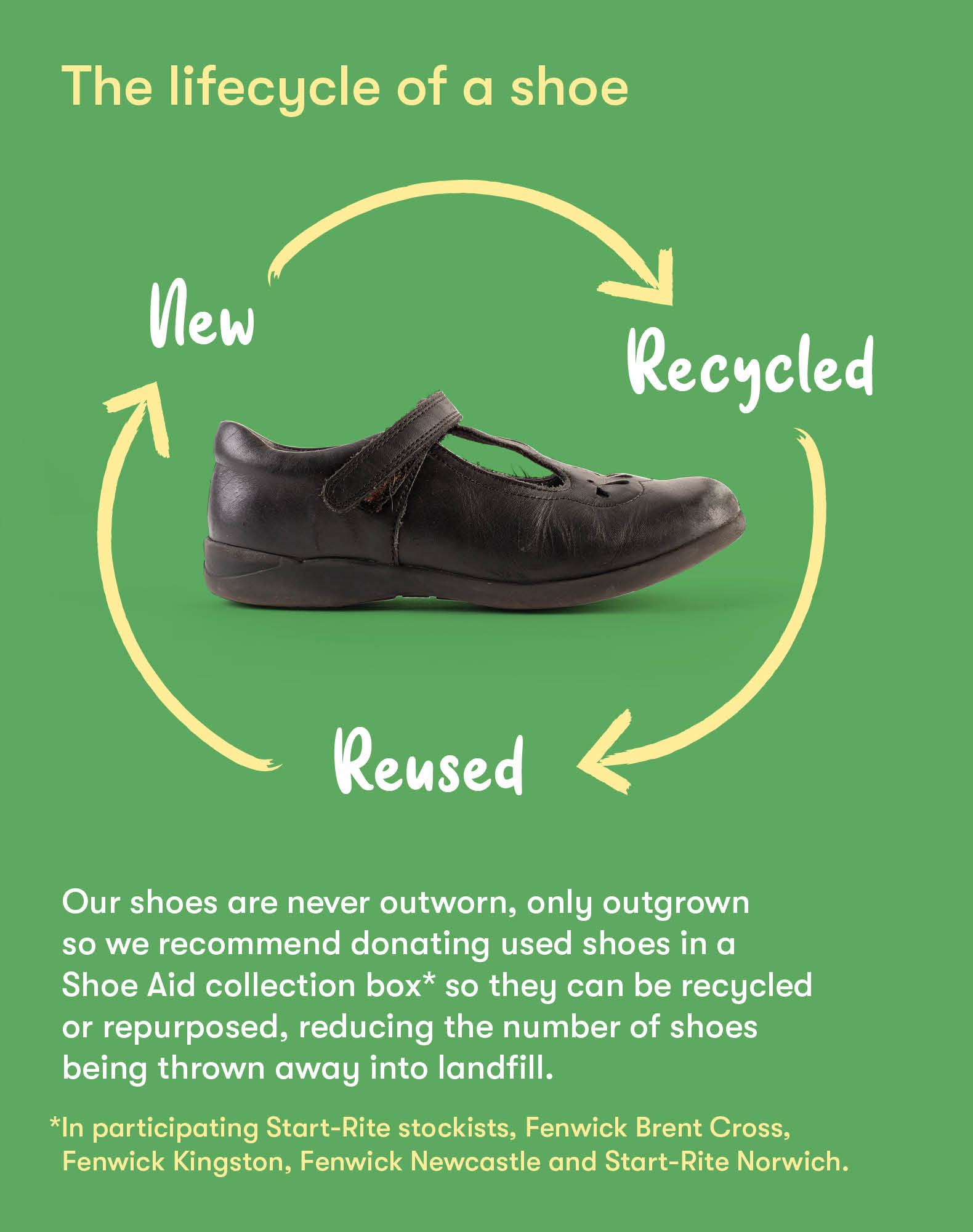Every couple of months Kate Hardcastle MBE checks her children's shoes and clothes for fit and any repair needs. You do not have to be crafty or have lots of time to make sure that your children’s wardrobes last longer. Fast fashion has really taught us to think with short-term views about clothing in general – but just because children grow quickly it doesn’t mean that you can’t expect for their clothes and shoes to last a longer.
1. Firstly, in clothes I buy a larger size so there is growing room in everything.
It doesn’t take a lot to ensure that clothes and shoes can fit for today but last easily for the school term. Look for skirts, shorts and trousers with adjustable waists. These are simply a button and elastic fix on the waist band to ensure that you can adjust the waist accordingly.
Use Wunderweb to press a shorter length on trousers. You can of course fix with a few stitches – but for a quick fix – we measure the trouser whilst on then take up to the appropriate length by using a hot iron to apply the web. Generally, this tends to last maybe with a few top ups until we are ready to take to the original hem. This can add easily another size months on to the life of trousers.
Buy shoes in the correct size, but look for manufacturers that include growing room and scope for adjustability, such as Velcro, rip-tape or straps. Just like with clothes, there is no industry norm for shoe sizing. Each shoe manufacturer can come up in a different size so always check the fit on the feet for every pair of shoes you buy and try to measure using the manufacturers own measuring gauge.

2. Buy in the sale periods and store if too big
A little storage can go a long way – and really help with costs. Most uniform we buy that is not the official school branded pieces has been bought at over 70% off the value. You can buy at all major brands at high discounts, but staples like school uniform will sell out quickly – and that’s where we use the additional support of Grandparent Power.
A lot of sales items appear in store rather than online, and often the winning formula has been during midweek sale periods where further reductions of 70% (we even bought trousers at £1 a pair) have enabled us to pick up polo shirts, trousers and tights at big savings.
Often these are not in the right size, so we file and sort them into a box that has a list on the front of the children’s future ages and allows us to pick from once we have enough at that age range.
Another quick tip if storage space is stretched is to pack sale bargains into your suitcases when not in use.
3. Look out for offers and set up a unique email account
Sometimes you are just not going to find any items in a sale, and that’s why getting used to the retail calendar is a helpful thing to do. I have noted when major brands have discount periods – and I add this into my calendar for a year on. If a brand offers a percentage off school uniforms it's usually during the last week of the summer term – I have that noted for next year. I also have Black Friday promotion dates and other seasonal savings.
I do find that brand newsletters can crowd my inbox and yet these can often be helpful for alerting me to flash sales and discount codes – so I have a completely unique email account which I check regularly – but only when I am ready to buy, have my list and can afford to do so. Having promotions in your email flow everyday can easily side-track you from buying what you need and cause just reactionary spends.
Also check on what buying deals you might have for cashback through your bank or workplace – we can often get between 5-10% back on spend using one of these sites – even on sale items.
4. Make a list and don’t buy more than you need
When stressed and pressured we can often over-buy or not spend as much time focusing on price. Our mind can often see retailers messaging on value packs and yellow tags and we associate this with value-for-money without checking the accuracy. Make a list of what your child will need to get through in uniform and be realistic to budget and buy when you can.
5. When to buy
I think we can all agree that there are more fun things to spend your money on than school uniforms. Yet if you procrastinate and put-off and buy in the peak period of the two weeks before school – you might struggle to get any savings, offers and there might even be some challenges with stock.

If you are up against it – don’t take on the burden of buying a full uniform just before term. Look at what you already have and what can be reused. If needs be – give it some SOS treatment (longer whitening soaks to freshen up, repairs on other items etc) to not over-burden yourself in one go.
Speak to your school about any items that you have found to be out of stock and see if they can help with a loan item until you can buy it.
6. Be responsible with garments and shoes when you no longer need them.
There are a few things to consider when it comes to doing the right thing when you have maximised the use out of your uniforms and shoes: With branded uniform items ask your school about donating these back to the school or sell locally / pass on locally using social platforms. Donate to charity shops in your area.
Recycle shoes – please don’t put your shoes in landfill – there are shoe recycling centres and drop offs all around you. You will find Shoe Aid boxes in independent shoe retailers that sell Start-Rite shoes. However, as foot health specialists, Start-Rite cannot recommend you hand down school shoes. Footwear is made from natural material and moulds to the user’s foot, for example there is an impact on the shoe if the wearer has a high or a low instep.
According to Start-Rite wearing footwear that compromises the foot health can affect how the body develops and can lead to damaged knee joints, spinal issues and hip displacement. Mostly it's ok to hand down shoes, but it’s not recommended for school shoes that have already gone through hard use during active school days.
